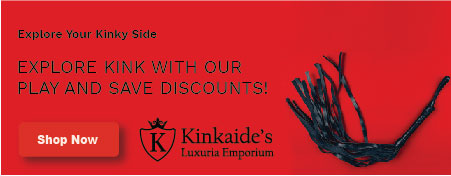Hairy Nipples: Why Women Get Them and The Quick Fixes that Work
Many women have hairy nipples and even hairy boobs. If you have this issue, don’t worry, it’s nothing serious and can easily be sorted out. Here’s how.

Hairy nipples were probably the last kind of hairs you ever expected to crop up on your body as a female. Pubes? Bring it on, I’m a woman now! Chin hair? Err… sure, I can always pluck. Nipple hairs?! Who signed me up for this cosmic joke? I mean come on, hairy boobs?
If you’ve noticed thick, coarse hairs starting to swirl around your areola, then you’ve joined a common group of women who usually stay mum on this very subject.
To this, we say “no more!” We’re opening up the dialogue about hairy nipples and hairy boobs in general. It’s time to talk about why you may end up with them, and what to do if you have them.
[Read: Boob talk: Yes, your breasts are perfectly normal]
Why do we get hairly nipples?
What is causing this sprouting of hairs? Why don’t they stay in the areas where hair is supposed to be? You can blame a million and one things, but for the most part, it’s down to hormones.
Yes, as women, we deal with everything hormonal and then some. It seems that hairy boobs are another things our hormones want to throw at us. You’d be forgiven for thinking that your hormones hate you, but rest assured, they don’t.
Of course, there are some others reasons why you may have hairy nipples, which we’ll get into later, but they all tend to start and end with hormones! So, why do some women end up with these pesky hairs? [Read: At home bikini waxing: Tips & tricks for first timers]
What do hairy nipples look like?
Most women who complain of hairy nipples have the odd wiry, thick hair sprouting randomly out of their areola. This can be one hair or a few at a time, but they’re normally quite thick. Your entire body is covered with fine hair, most of which you can’t even see, but occasionally, our hair likes to give us the odd surprise.
It’s also possible that the hair on your nipples won’t be thick or wiry and instead, it’s fine and baby-like. We have hair in many other parts of our bodies, such as legs, upper lip, arms, and genitals. Having hairy boobs is just another way for your body hair to make itself known.
Some women may never be troubled by hairy nipples. Other women may have it occasionally. Whilst some other women may have it all the time.
There is no way to predict who is going to have problems with hairy nipples and who isn’t. It seems to be a ‘luck of the draw’ kind of deal. [Read: Trim, shave, or natural: The real score on the bush]
Are hairy nipples normal, or should you be worried?
Don’t panic! For the most part, hairy nipples aren’t anything to worry about and they’re simply a sign of hormonal changes in your body.
However, there are some situations in which it’s best to get it checked out. This is normally when hairs exist alongside other symptoms. We’ll cover that in more detail shortly however. For the most part, simply know that hairy boobs are simply part of your body.
There’s an agonizing amount of shame revolving around the breast area when things aren’t looking right. Whether you’re worried about not having perfectly round breasts or fretting about your nipple size, every girl seems to want the perfect pair – which doesn’t exist, by the way. [Read: The different types of nipples – You definitely haven’t seem them all!]
That’s why admitting to a girlfriend that you’ve had some pube-like hairs sprout their way into your bra doesn’t feel like the easiest thing to admit. After all, what if you’re alone in your new hairy adventure?
Rest easy. You’re not. Many women have nipple hair, they just don’t like to talk about it much.
So, is having hairy nipples normal?
The short of it is, yes. It is normal to have hairs on your nipples, but there are some exceptions to the rule.
What causes hairy boobs?
Now that you know hairy nipples are a common issue, you’re probably wondering why women get these charming whiskers, to begin with. It should be noted that certain medications can lead to excess hair growth.
Medications include minoxidil, steroids, testosterone, phenytoin, and cyclosporine. [Read: 8 types of nipples – you definitely haven’t seen them all]
That being said, the most common answer comes down to your hormones, as I’ve already mentioned. After all, who can throw a wrench in your good looks quite like hormones can? Nobody, that’s who! Here are a few common issues that may be causing your nips to sprout.
1. Pregnancy
Now that you’re bringing life into the world, what better way for your body to celebrate than by sprouting a couple of unwanted hairs on your boobs? Hormonal changes during pregnancy can make previously blonde and delicate hairs around the breast begin to grow course, dark, and long. [Read: How to tell if you’re pregnant – 10 early signs to keep an eye on]
2. Use of hormonal birth control
Use of hormonal contraceptives can cause fluctuations in your, well, hormones. These fluxes can lead to hairy boobs, among many other less-than-endearing side effects.
3. Menopause
Women who are going through menopause or peri-menopause are subject to increased hair growth. This is all due to hormonal imbalances. Basically, any time your body is going through a fluctuation in hormones, there’s a chance you’re going to see some hairs sprout in one place or another. Just another charming perk of getting older. [Read: 10 birth control options and what they can do for you]
4. Abundant testosterone
Some women have more of the male hormone, testosterone, than others. In that case, hairy nipples are a very common effect.
If this is the case, you might also notice oily skin or acne, and a few other symptoms, such as hair loss and period problems. If you’re noticing these things, a chat with your doctor is a good route forward, to try and work out the cause and treatment.
5. Certain medications
I’ve already mentioned that certain medications can cause an increase in hair growth, particularly in the nipple area. These tend to be certain immunosuppressant medications, testosterone supplements, and glucocorticosteroids.
It really depends on what you’re taking the medication for and the severity of your hair growth. In the case of taking glucocorticosteroid, overuse can lead to Cushing’s Syndrome. One of the features of this syndrome is excessive hair growth.
Sometimes, it’s a case of weighing up the benefit of the medications on the actual problem, compared to a few side effects you can handle. Never simply stop taking any medication however, always speak to your doctor first. [Read: How to take care of yourself as a woman – 19 ways to power yourself]
6. Polycystic Ovarian Syndrome (PCOS)
PCOS is a hormonal imbalance that occurs in women. It is thought that around 1 in 10 women in the child-bearing age group have PCOS, many of which are undiagnosed. One side effect of PCOS can be increased hair growth, particularly on the breasts. This is down to hormones once more and is something that your doctor can help you to treat.
When should you check things out with your doctor?
For the most part, we know that hairy nipples aren’t anything to be too concerned about. Yes, they’re a nuisance, but they’re not detrimental to your health. If you’re worried, by all means, go and have a chat with your doctor. However, if you think that you may have PCOS or you’re taking glucocorticosteroids, definitely seek help from your doctor. [Read: What to expect at your first gynecologist appointment]
When left untreated, PCOS can cause cysts on the ovaries and make conceiving extremely difficult. If it is left untreated, it may lead to heart disease, diabetes, and other serious health issues. Symptoms of PCOS include difficulty losing weight, irregular periods, thinning scalp hair, issues with fertility, depression, and – you guessed it – excess hair growing everywhere else on your body.
If you think that this could be a problem for you, schedule an appointment with your doctor.
If you’re taking any specific medication, particularly testosterone or glucocorticosteroids, it’s also worthwhile talking to your doctor. The side effects of these drugs do include increased hair growth but again, it comes down to risk versus benefit and what the alternative medications could be for your condition.
Prolonged use of glucocorticosteroids can also lead to Cushing’s Syndrome in some cases. And guess what? Increased hair growth is a side effect of that.
Put simply, if you’re worried, a chat with your doctor will put your mind at rest.
What can you do about hairy nipples?
Now that you have your new visitors, you’re probably wondering if you have to keep them. The good news is that you can easily get rid of them whenever they pop up to say ‘hi.’ These are the most common ways of getting rid of nipple hairs. [Read: Listen up ladies! Here’s how to shave your pubic area]
1. Shaving
Shaving is a quick way to get out of the jungle that now resides on your breasts, but it comes with a cost. Firstly, stubble will come back in a hot minute. Second, there’s a high probability that you will still be able to see the bottom of the dark hair follicle even after shaving.
If you’re one who believes the ‘If you shave one, five more will attend its funeral,’ then avoid shaving.
2. Waxing
Specialists cite a 3-6 week regrowth period after waxing, which is great if you don’t want to be checking your ta-tas for sprouting hairs every other day. That being said, waxing around such a sensitive area may be freakishly painful. But then again, what waxing experience isn’t? [Read: The pros and cons of getting a full Brazillian wax all girls should know about]
3. Tweezing
Tweezing is probably the best route for getting rid of unwanted nipple hairs. A simple pluck will grab the hair by the root, and you won’t have to worry about re-growth for more than a week. It will sting a bit, but it will only last a second.
There may be a chance you’ll get an in-grown hair around your nips, but tweezing is truly the quickest and most effective avenue of hair removal.
4. Electrolysis
Electrolysis is basically laser hair removal for your hairy nipples. This treatment boasts that it can permanently eliminate unwanted hairs on your breasts.
If you have the money and the figurative balls to go for it, don’t forget to do your research first. You may have to do several rounds of expensive electrolysis before the hairs stop growing in. [Read: Listen up ladies, here’s how to share your pubic area in the safest way possible]
5. Hair removal cream – No, no, no!
NEVER use hair removal cream on your nipples. I’ve put it here so that I can impart that message clearly. Yes, many hair removal creams are designed for use on the legs, bikini lines, etc, but the nipple area is very sensitive.
This isn’t somewhere you want to be putting chemicals unless you’re asking for an allergic reaction or a very sore breast at least.
6. Just embrace it!
Many women are simply embracing their bodies as they are these days. If this is you, then why bother risking an in-grown hair?
You’d be surprised how many lovers go unfazed by nipple hairs, or other ‘odd’ hairs around the female body. If you’re down with your body hair, then grow it out!
[Read: The 5 types of vaginas that make up all the vaginas in the world]
In the end, don’t sweat it. Hairy nipples may not be what you’re used to seeing in movies or hearing from your girlfriends, but they are most definitely common among women everywhere.
Liked what you just read? Follow us on Instagram Facebook Twitter Pinterest and we promise, we’ll be your lucky charm to a beautiful love life.




